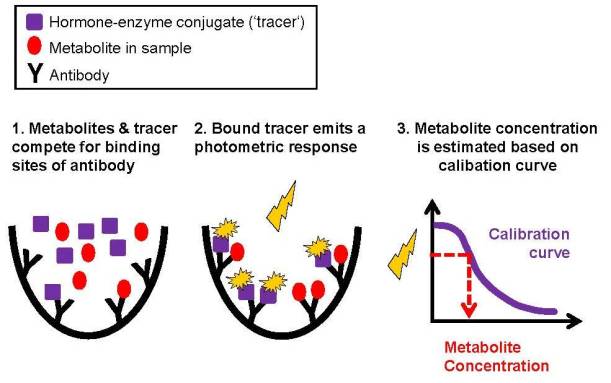Now that our field seasons are (mostly) over, the members of the Langkilde lab have been busy processing the blood samples we collected over the summer.
As I wrote last time, most of us are looking in some way at the impacts of environmental stressors on an animal’s behaviour, and the characteristics of the offspring they produce. In order to test these questions, we need to be able to quantifiably measure the stress levels of the animals we study.
To do this, we took blood samples from our study species in the field to measure levels of “stress hormones” (glucocorticoids, factors produced by the adrenal glands in response to stress). These hormones circulate in the blood, and correlate with the baseline stress levels of an individual – the more glucocorticoids we find in the blood, the more stressed an animal is. We determine the concentration of glucocorticoids in our blood samples by first centrifuging the sample to separate red blood cells from the plasma (the clear fluid in the eppendorf tube below), and then running the sample through an enzyme immunoassay.

Enzyme immunoassays work by using antibodies that bind to the factor of interest in a sample – in our case, the steroid hormone corticosterone. We add a known amount of plasma to each well of the plate (above right), and in each well, the corticosterone in the sample binds to the antibodies. The antibodies that aren’t bound by corticosterone are bound by a conjugate tracer, which gives off a colour. So, in the plate above, the more “yellow” the well appears, the less hormone it contains (meaning that more free antibody sites have been left to bind with the yellow tracer-bearing conjugate). We can compare the “yellowness” of each well with wells containing a known amount of hormone, and this allows us to calculate the concentration of hormone in each sample:

© Eve Davidian & Sarah Benhaiem https://methodsblog.wordpress.com/2016/03/11/hormone-metabolite-measurements/
I’ve had a lot of fun learning these techniques this Fall, processing my lizard samples, and helping Chris process some of his rattlesnake samples! I’m looking forward to reporting back on the exciting results these data contribute to over the next few months.

Preparing samples with Chris and Danielle!

